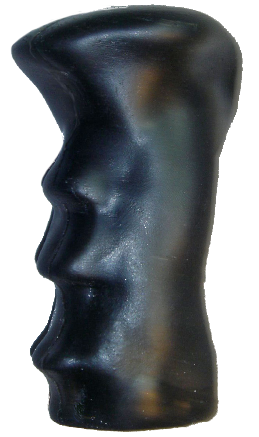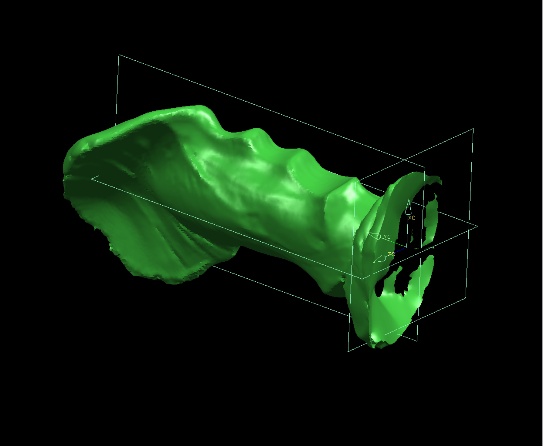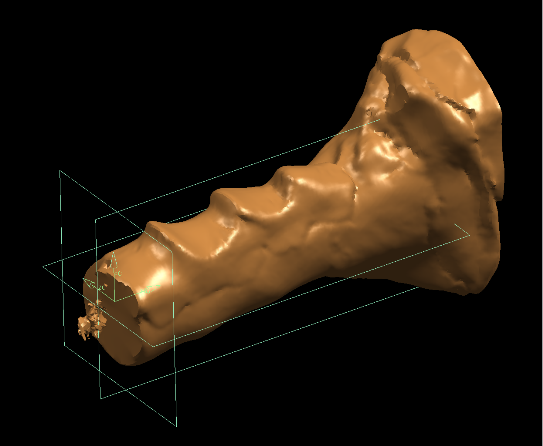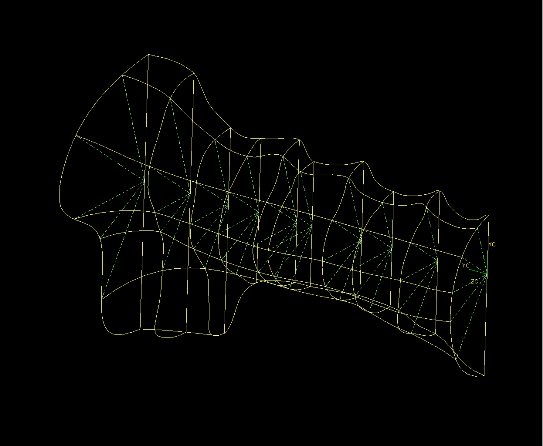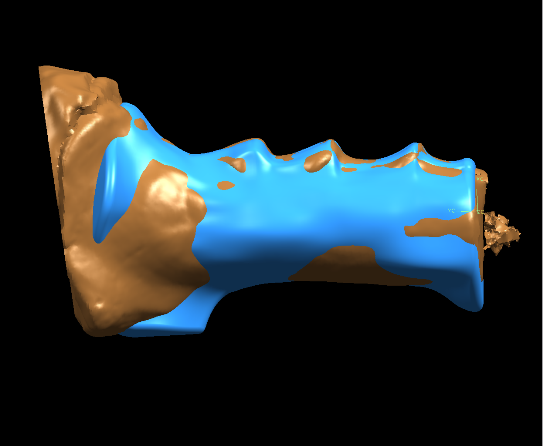Case Study: Ambi-Handle
The client needed a 3D model created of a organic hand-form shape to be used in a wheelchair handle new product offering. This project was unique because it required a very technical execution of free-form modeling to accurately conform to the impression of a hand shape. The client took a chunk of clay, and made his own hand-grip impression in the clay model.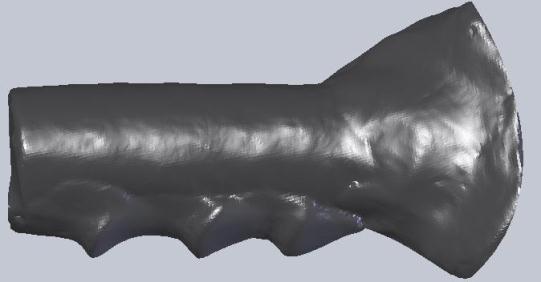
The client provided 2 laser scans (shown below as the green and orange images) that needed different attributes combined into a single, symmetrical, universal hand-grip form.
The problem with laser-scan files, is that they are .STL format, which is a ‘faceted surface model’. STL’s are pretty much incompatible with solid modeling software, they can be viewed, but not manipulated in any way. Solidworks has some limited feature recognition capability, but solid geometry fails to genereate for all but the very simplest models. The strategy with the ambi-handle was to use the laser scan as a visual guide, and create the solid model to closely match the visible surfaces.
The 1st step was superimposing, and re-positioning the two laser scans so that the features appropriately lined up and were properly positioned about the global CAD coordinate system and principle datum axis. 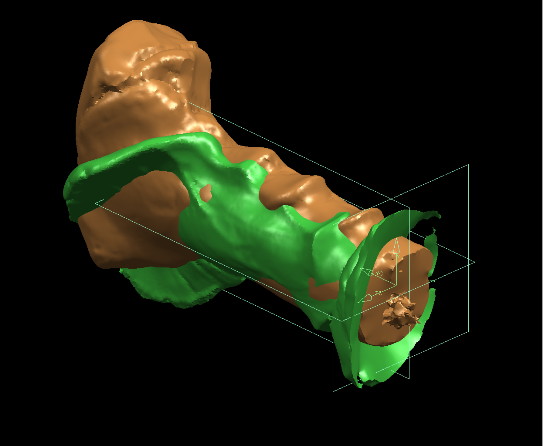
Then, a collection of cross-sectional profile sketches and axial ‘guide’ curves were created to conform to the surface geometry. The sketches were created exclusively with spline geometry, that were painstakingly manipulated to match the laser scans.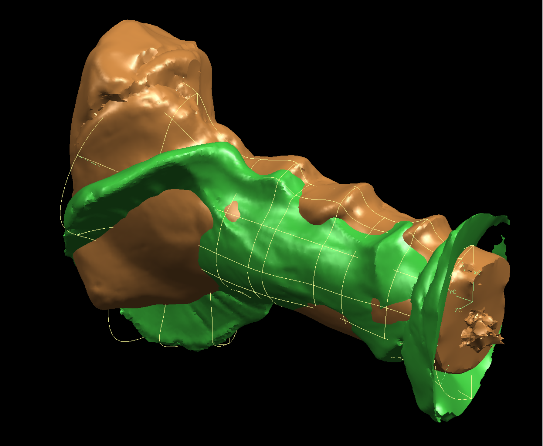
Next, a lofted sheet body was created based on the section and guide sketches. The handle was initially modeled as one-half only, and was later mirrored so that it was symmetrical, hence: ambi(dexterous)-handle. 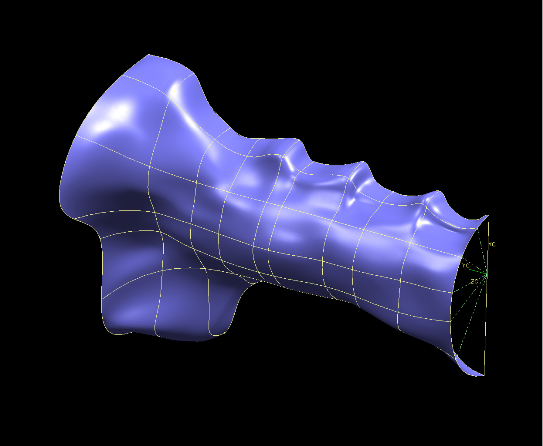
Then a solid body was created based on the lofted surface body, and the mirrored 2nd half was created. Internal features were created to fit the wheelchair handle stems. 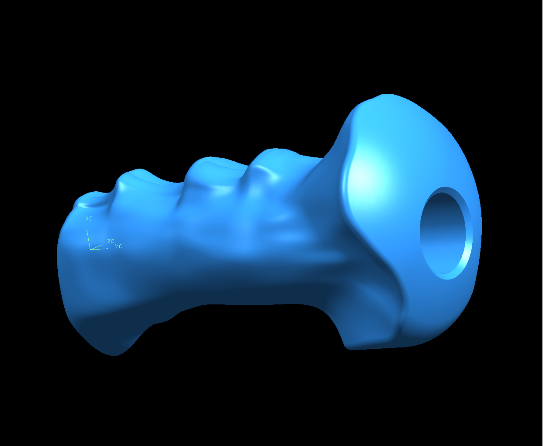
Comparison of the final solid model with the original laser scans show the fidelic conformance of the hand-form (orange finger-grips and green palm area), but the final model has smoothed out the irregularities in the laser scans.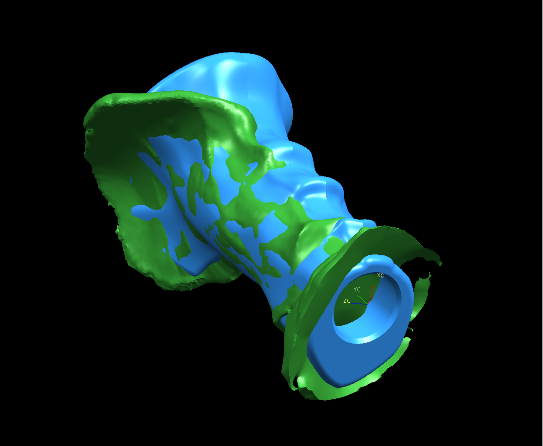
Photo-realistic renderings were made of the final design, and the client used the finished 3D models to create production parts.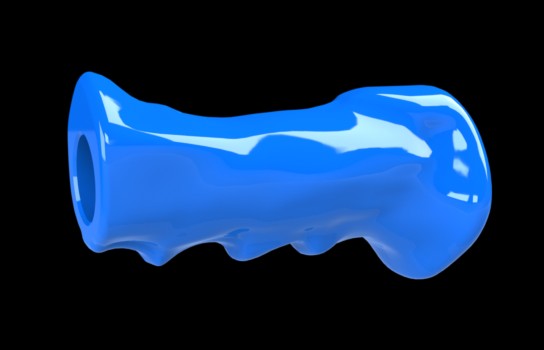
They accomplished this by using the resulting 3D CAD files to make a 3D printed Rapid Prototype (RP). The RP was used as a master model for a silicone rubber mold, that was subsequently used to cast foam rubber handle grips, which are now being sold to the medical community. Another success story enabled by the CAD modeling competency at LTS.